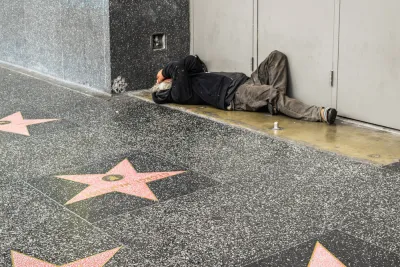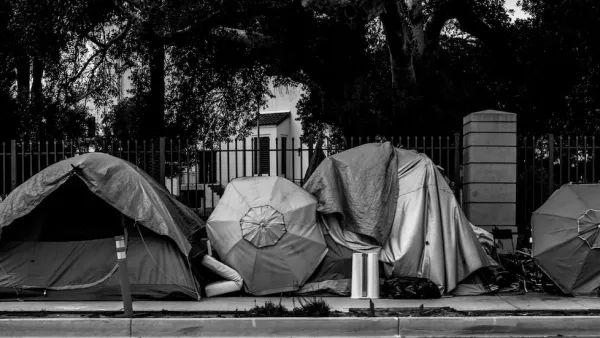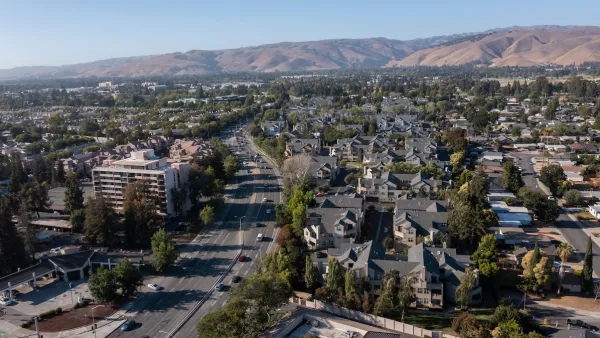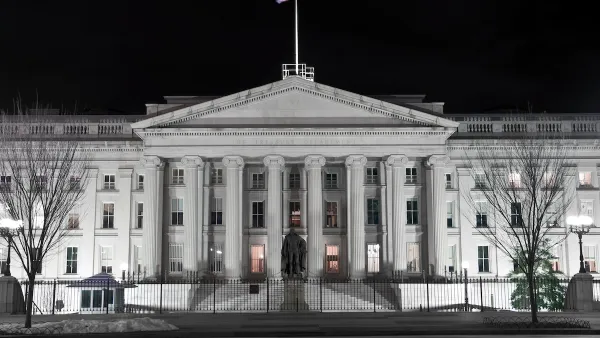The role of business improvement districts in criminalizing homelessness reflects a tension between private interests and public space, Rob Waters writes.

With more Americans becoming homeless every year, the question of how cities should respond to the crisis has grown increasingly urgent. In Next City, Rob Waters unpacks the debate between homeless advocates and business improvement districts over policing and criminalization—a conflict that he says is truly about "the degree of influence that private interests should exercise over the management of public space."
"Today's conflicts between homeless activists and BIDs have their roots in 'slum clearance' efforts of the 1950s and 1960s that razed huge chunks of city neighborhoods and displaced hundreds of thousands of residents, mostly low-income people of color," Waters writes.
BIDs operate in cities around the country, and are designed to allow property owners to collectively pay into area improvements beyond those provided by local government. But on top of street cleaning and marketing campaigns, BIDs have gained a reputation among critics as the "foot soldiers of gentrification" for deploying "private armies" that funnel homeless residents into the legal system. Following instances of harassment, violence, and seizure of property, Waters reports, a study from UC Berkeley suggested that BIDs regularly "exclude homeless people from public spaces in their districts through policy advocacy and policing practices."
Waters delves further into BID activities and speaks to BID representatives about their attempts to attract visitors and raise property values. He also notes a different approach taken by one Community Benefit District in San Francisco: providing tenant-landlord mediation to prevent eviction (a key driver of homelessness) and installing public toilets and needle disposal to improve street cleanliness and public health.
FULL STORY: No Place Left to Go: Business Districts Keep Homeless Populations on the Move

Analysis: Cybertruck Fatality Rate Far Exceeds That of Ford Pinto
The Tesla Cybertruck was recalled seven times last year.

National Parks Layoffs Will Cause Communities to Lose Billions
Thousands of essential park workers were laid off this week, just before the busy spring break season.

Retro-silient?: America’s First “Eco-burb,” The Woodlands Turns 50
A master-planned community north of Houston offers lessons on green infrastructure and resilient design, but falls short of its founder’s lofty affordability and walkability goals.

Test News Post 1
This is a summary

Analysis: Cybertruck Fatality Rate Far Exceeds That of Ford Pinto
The Tesla Cybertruck was recalled seven times last year.

Test News Headline 46
Test for the image on the front page.
Urban Design for Planners 1: Software Tools
This six-course series explores essential urban design concepts using open source software and equips planners with the tools they need to participate fully in the urban design process.
Planning for Universal Design
Learn the tools for implementing Universal Design in planning regulations.
EMC Planning Group, Inc.
Planetizen
Planetizen
Mpact (formerly Rail~Volution)
Great Falls Development Authority, Inc.
HUDs Office of Policy Development and Research
NYU Wagner Graduate School of Public Service




























